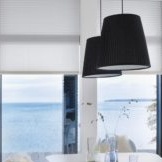Why are plastic windows crying?
Sometimes, customers who have supplied high-quality metal-plastic, aluminum or combination windows face a problem: their windows “cry”! This effect is manifested, as a rule, on a double-glazed window in the form of condensate.
What is the cause of condensation?
- It is very important to understand exactly where moisture condenses. If condensation appears inside the glass, then this indicates that the glass has a defect and needs to be replaced, this happens and the manufacturer, as a rule, quickly fixes this problem by replacing the glass with a new one.
- The window sill and the window arrangement also affect the formation of condensation, because the double-glazed window should not be cold. For high-quality heating of the window opening, the window sill should not overlap the batteries;
- But do not forget that if the humidity in the room is increased, for example: food is being cooked, a kettle is boiling, or there are any processes associated with an increase in humidity, condensation can also occur on the highest quality windows. If air humidity is above 40%, there is a risk of condensation.
- Additional reasons may also include: flower pots, aquariums, pets, the number of residents in the room. Each of these factors has a negligible effect, but the sum of all can cause condensation;
- Moisture condensation on a double-glazed window can also be due to the fact that the heat transfer resistance (ST) of your double-glazed window is lower than the coefficient adopted in this climate zone. This means that your window is not warm enough for your climate.
As an example, we take the 1st temperature zone (14 regions of Ukraine, the south and part of the center of Russia). The temperature of the so-called “dew point” at 20 ° C of the air temperature and humidity of 50% (which is technically “normal room conditions”) will be approximately 9 ° C. Accordingly, a double-glazed window with ST 0.5 at a temperature of about -18 ° C in the street and + 21 ° C in a room guarantees a temperature on the surface of a double-glazed window facing the room from 8.5 ° C to 10 ° C. Which means: under the specified conditions, the window will not “cry”. You should know that the warmer the glass, the less moisture will appear on it.
Consider the indicators of heat transfer resistance (ST) of the most common PVC double-glazed windows
- a single-pane glass unit having a width of 24 mm, made of two glasses with a nominal value of 4 mm and a distance of 16 mm (4x16x4) has a ST of 0.34 · 0.37;
- a single-pane glass unit having a width of 24 mm (4x16x4k) with energy-saving glass has ST 0.50 · 052;
- a single-pane glass unit having a width of 24 mm, gas-filled with argon (4x16x4k, ar) with energy-saving glass, has ST 0.52 · 0.54;
- double-glazed window with a width of 32 mm and made of 3 glasses with a nominal value of 4 mm and a distance of 10 and 10 mm (4 × 10 × 4 × 10 × 4) has a ST 0.53 · 0.55.
What to do if plastic windows cry
- Provides regular ventilation of the room.
- It is necessary to check the mounting seams and slopes for freezing and blowing, everything must be sealed.
- It is necessary to check the hood, it must be in good condition.
- In the event condensation forms inside the glass unit, replacement is required. After all, condensate inside a double-glazed window is a sign of marriage;
- You can also use special aerosols - anti-fog.








